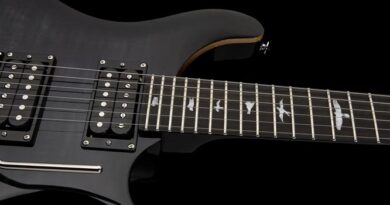Ibanez RG550 Genesis
The RG550 is a guitar that really needs no introduction. The RG series has been at the backbone of the Ibanez lineup for over 35 years now. Many suggest that the catalyst at the time is the runaway success of the JEM model. Why not offer something without the Vai-inspired bells and whistles? And we have the RG550. Fact or fable, we still have a cool guitar on our hands.
A pal that is much more well-versed in all things Ibanez has been talking about this for a while. He starts with pointing out this is made in Japan. What is that a thing? Go poke around some of the electric guitars on the Ibanez site. They are proud enough to point out ‘Made In Japan” at the top of the product page for models that are… wait for it… made in Japan. In many cases, you’ll see that on the high-end versions of several of the artist signature models.
In other words, this “currently” $1000 RG550 is rubbing shoulders with the big boys. You will see that I find this guitar to be a totally functioning workhorse as-is out of the box. But you can throw in a tweak or two to turn an existing rock-solid in to an instrument that rivals other models that clock in at twice as much dough.
First Impressions
Out of the box, this guitar is ready to go. No joke. Setup, intonation, neck relief, and tuning are all dialed-in. Lines are clean and the finish is solid. It meets the description and it’s delivering on what it claims to be. Hands down, cannot find an issue.
Body
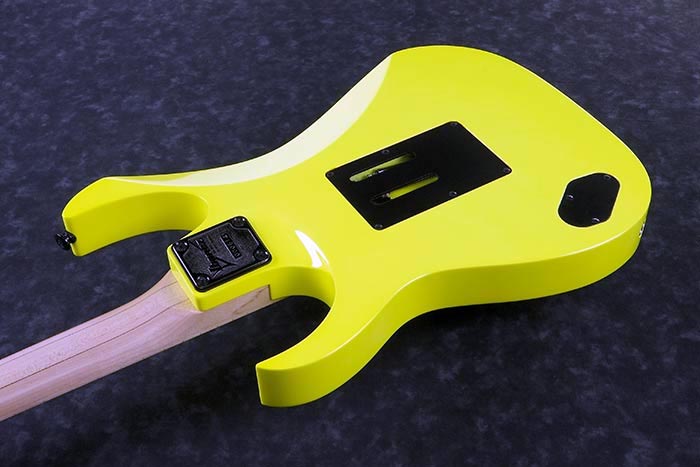
Out of all the elements of this guitar, the body might be the hardest for a deep dive. LOL! Why? Well, it’s the Ibanez body that so many of us have grown familiar with over the past 35+ years. The tight roundover. Pointy horns. Deep cutaway. Tilted neck joint.
Electronics

The RG550 comes stock with some Ibanez pickups. These are solid pickups. For real. You cannot say that about all stock pickups in a $1000 guitar. HaHa! But these pickups get the job done with room to spare. More clarity and definition that I was expecting. While the humbuckers are ceramic-based, the edge has a flavoring of a warm character that keeps them from sounding harsh. You can totally leave these pickups in the guitar and hit your gig without concern. Of course, I’m a huge 80s nerd, so I put some pink DiMarzios in there. More on that in a second.
V8 Bridge Humbucker
Series – 17.103 K
Inductance – 8.184 H
Split – 8.572 K
Split – 5.574 K
Parallel – 4.28 K
Magnet – Alnico
V7 Neck Humbucker
Series – 9.11 K
Inductance – 4.55 H
Split – 4.556 K
Split – 4.545 K
Parallel – 2.273 K
Magnet – Ceramic
S1 Middle Single Coil
Series – 8.971 K
Inductance – 3.617 H
Magnet – Alnico 5 slugs
Alpha pots are in order for the V and the T. You may or many not be tempted to geek out on upgrades with the pots and the jack and the harness wire. I get it, and it’s tempting. But I have to say it is sounding just like I want it to sound. So I’m choosing at the time to leave well enough alone and stick with what’s working. Again, there is plenty about this RG550 that is ready-to-rock right out of the box.
Hardware
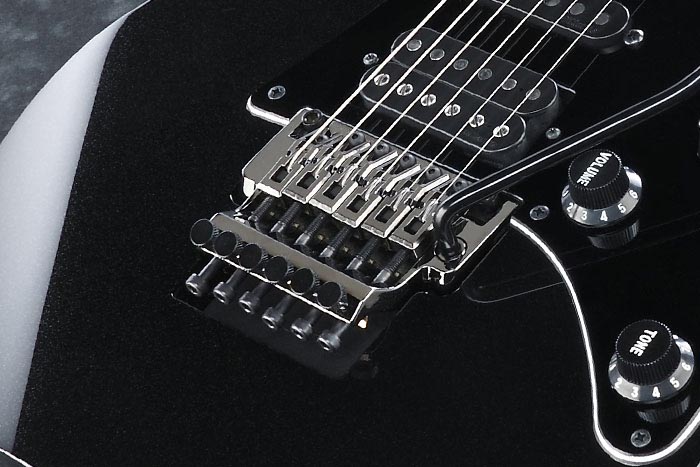
The EDGE double-locking tremolo system is the expectation of the RG model. Not the Pro or the Lo-Pro or the Zero II or the III. The EDGE. This floating bridge is working out quite well. It’s holding tune well. And just in case, there is an abundance of travel on the fine tuners. Ibanez also includes all of the wrenches to services this system.
Tuner are Gotoh. Not sure there is much more I can say about that. Been using Gotoh on my own builds for close to 10 years now. Always work like a champ for me and my needs.
Neck
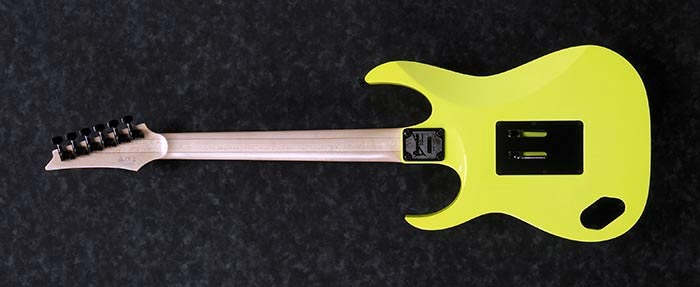
The neck is probably one of the most significant surprises. How so? One thing is that this is the Super Wizard neck. That makes is literally 1mm thinner than the regular Wizard profile. Yet it does not feel like a neck that’s “too thin”. Maybe because it’s not. LOL! Is it thinner than a Lester or a regular Strat? Of course. But this is quite comfortable and feels like a natural transition from any other guitar that i might pick up before or after playing this one.
The other big surprise is how steady the neck is. In the 6 weeks this has been here, there has only been a single tweak of the truss rod. And that was only the slightest adjustment. I did literally call Ibanez and ask if there is any type of neck reinforcement. HaHa! But, nope. It’s just the 5-piece laminate neck. It’s been super stable.
Frets
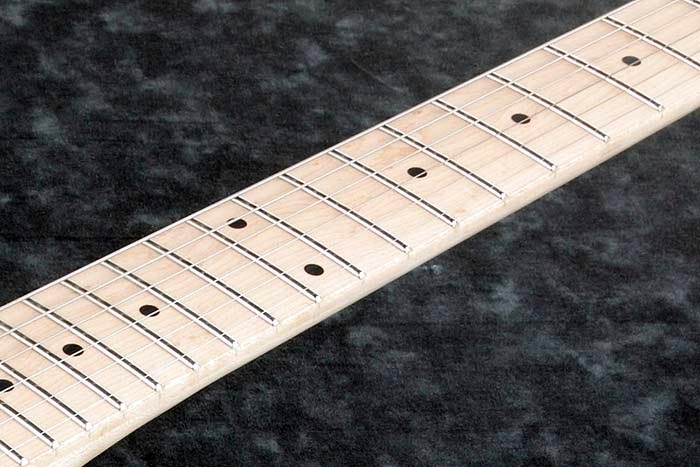
These are big frets. Jumbo doesn’t get there. These are Super Jumbo. There is a special mojo to Ibanez fretwire profile on this guitar that compliments the intonation. The frets were also exceptionally level and are well-dressed. To be fair, this is a $1000-range instrument. So I do mean there is no fret sprout off the edges. The edges so have the bevel, which is what most are going to expect from this guitar.
The radius translates to pretty much 17° in inches. That makes it just a little bit flatter than the JEM profile. Again, it’s easy on the hands and is fun to play. You don’t have to be a shredder to appreciate what’s going on here.
Demo
Specs
neck type: Super Wizard 5pc Maple/Walnut neck
top/back/body: Basswood body
fretboard: Maple fretboard / Black Dot inlay
fret: Jumbo frets
number of frets: 24
bridge: Edge bridge
string space: 10.8mm
neck pickup: V7 humbucker (passive / ceramic)
middle pickup: S1 single coil (passive / alnico)
bridge pickup: V8 humbucker (passive / ceramic)
factory tuning: 1E, 2B, 3G, 4D, 5A, 6E
strings: D’Addario EXL120
string gauge: .009/.011/.016/.024/.032/.042
hardware color: black
Neck Dimensions
Scale : 648mm / 25.5″
Width at NUT: 43mm
Width at 24F: 58mm
Thickness at 1F: 17mm
Thickness at 12F: 19mm
Radius : 430mm / 16.93″
Switching System
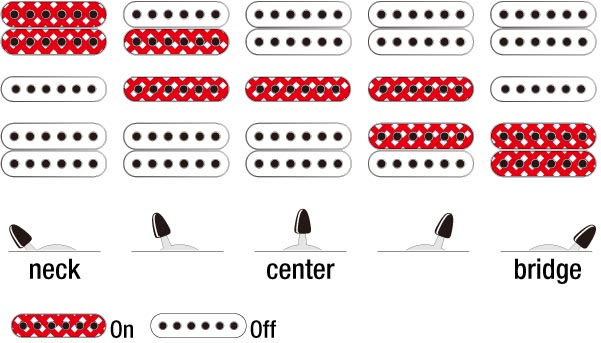
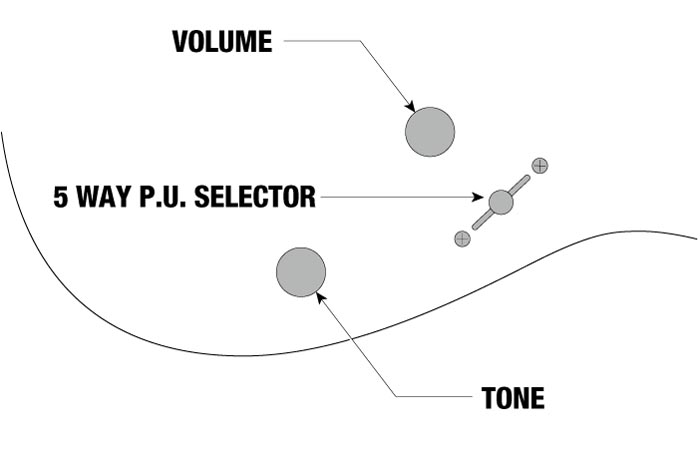
Color Variations
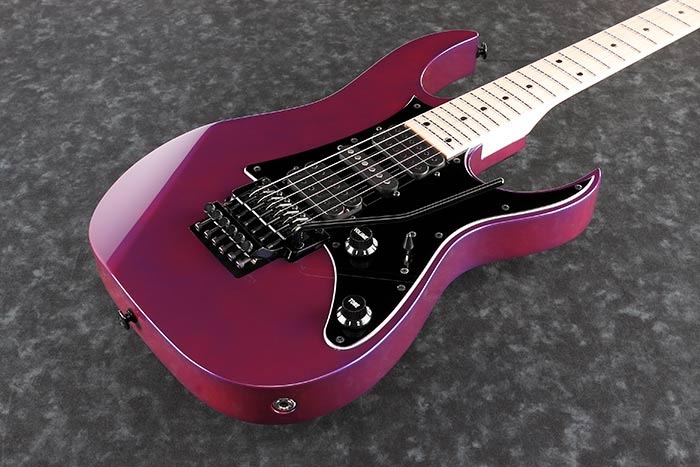
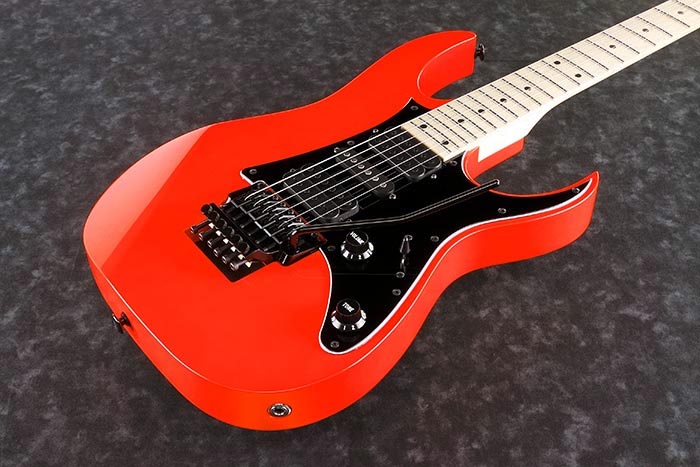
Areas Of Opportunity
None come to mind. Open the box, make sure it’s in-tune, and start playing. Seriously. This RG from the Genesis collection out of the Japanese factory is solid as-is.
However…. LOL! Yes, I did some tweaking. HaHa! Who does not see the Desert Yellow RG and not image the earliest JEM offerings? So, you bet, I have some pink DiMarzios going on. The original JEM setup of a PAF Pro in the neck and middle and the JEM single coil. Yes, you can contact DiMarzio and order the JEM single coil pickup. Essentially, yeah, I am taking a new $1000 Ibanez and turning it in to a copy of an approximation of a JEM from 35 years ago! LOL! Add some knobs and a switch tip from AxLabs (in green and pink, of course) and you’re there.
Other possible personalization opportunities include the Hantug brass sustain block for the EDGE tremolo. Same height and shape. But with about 10% more thickness on the backside. Why there and not all over? So that it still allows for full floating functionality and does not get in the way of pulling up. The Red BIshop Magik-Arm is also a must-have consideration for the EDGE system.
Conclusion
The RG550 Genesis is a fun guitar. Definitely check one out when you have the chance. With just the DiMarzio pickup swap, you are up to your eyeballs in the late 80s Steve Vai playground. Maybe things didn’t work out for you when you wanted a JEM 35 years ago. Or maybe the JEM’s features were just a little bit too much. Perhaps you’re not up to paying over 3x as much for the new PIA model. Or for whatever the reason might be. This RG550 is your opportunity to lay hands on a great 80s-inspired shred stick that is worth your valuable time.
For reference, this Ibanez RG550 Genesis guitar evaluation was conducted with a Fractal Axe-Fx II XL+ featuring Celestion Impluse Responses and Fractal MFC-101 MIDI Foot Controller. Real cabs in use are Marshall 1960B, Mojotone British, and Peavey 6505 cabs loaded with Celestion Classic Series Vintage 30s and Classic Series G12M Greenbacks.
Ibanez Website | Facebook | Twitter | YouTube | Instagram
7 string 16Ω 59 Airbucker Alnico 2 Alnico 4 Alnico 5 Alnico 8 Bare Knuckle BKP Boot Camp Brown Sound Celestion Ceramic Custom Shop David Shepherd DiMarzio Dual Resonance EVH Fishman Floyd Rose Fluence Gibson HSP90 Humbucker Ibanez JB Jimmy Page John Petrucci Les Paul MJ Mojotone P90 PAF Pariah Pickup Satch Seymour Duncan Singlecoil Single Width Speaker Steve Vai Tech Tip Tremolo Virtual Vintage



